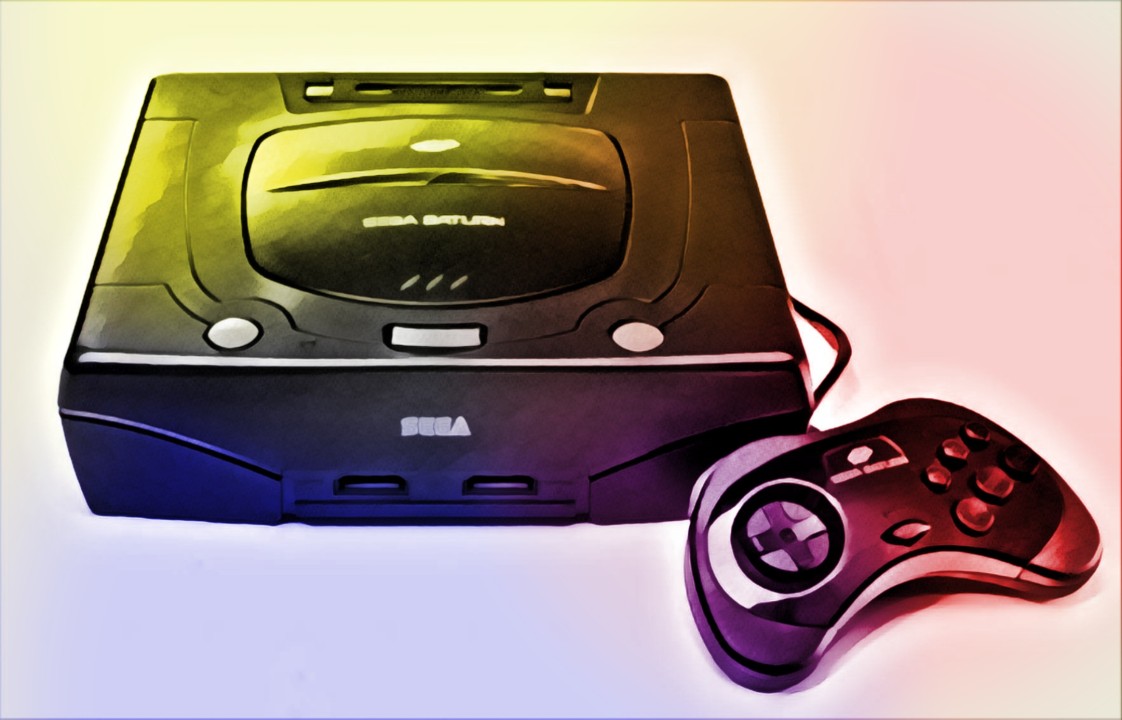
The Sega Saturn: The Infamous US Launch
Next month sees the 27th anniversary of the now, infamous North American launch of Sega's 32-bit home games console, the Saturn. Following on from the highly successful Mega Drive, Sega was brimming with confidence as the next console generation approached. However, a brand new platform from a company called Sony was about to rock the boat completely...
Development of the Sega Saturn was overseen by Sega’s R&D director, Hideki Sato (pictured), whose team had previously created the Master System and Mega Drive. Continuing the trend of adopting system codenames inspired by planets in the solar system, a concept established during the development of the Game Gear, the system was designated the name ‘Saturn’. It would go on to be the company’s only piece of hardware to maintain its codename as its official consumer name.
Initially, the console was conceived as a 2D focused machine, with only secondary 3D capabilities, an approach that would help keep costs low. The rapid failure of the previously-released 3DO console, the first next-generation console at the time, also led to uncertainty within Sega whether consumers were, in fact, ready for 3D games.
One year before the Saturn’s scheduled release, Sony publicly unveiled their intention to enter home console market with the PlayStation, a highly capable 3D machine that completely derailed Sega’s plans. Upon hearing the technical capabilities of Sony’s new console, SEGA hurriedly revised and overhauled the Saturn’s architecture to favour 3D rendering. The final console settled upon a dual-CPU arrangement and featured 8 processors (pictured).
The console first launched in Japan on November 22nd, 1994. Despite a slim selection of relatively unremarkable launch titles, the Saturn version of the incredibly popular arcade game, Virtua Fighter (pictured), bolstered sales, with the game selling at a near one-to-one ration with the console.
The Saturn’s North American launch, however, was not quite so successful.
Sega of America CEO, Tom Kalinski, believed that the North American market was not yet ready for a new console launch, as sales of Sega’s 16-bit hardware were still strong. However, keen to secure an advantage over the imminent PlayStation, Sega of Japan pushed ahead, wanting to release their machine as quickly as possible. Although Kalinski had previously announced that the Saturn would launch on September 2nd, 1995, his decision would be ultimately overturned.
During Kalinski’s keynote presentation during the Electronic Entertainment Expo, on May 11th, 1995, Kalinski would go on to reveal the price and features of Sega’s new machine, but then, much to the astonishment of those gathered, he would go on to declare that the console, from that moment, was on sale. This surprise move upset some retailers and developers, who were working around the original timeframe. A further blow came when, immediately following on from Sega’s presentation, it was announced that Sony’s PlayStation would retail for $299, a full $100 less than the Saturn (pictured).
The Saturn would go on to release across Europe two months later to little fanfare.
Due to the rushed nature of the Saturn launch, the first batch of games for the console suffered, with many offering little over the titles available on Sony’s PlayStation. However, as time progressed and developers grew increasingly familiar with the hardware, the Saturn saw a slew of impressive arcade ports, such as Virtua Cop, Virtua Fighter 2 and Sega Rally.
Unfortunately, the Saturn struggled to compete. Despite a plethora of classic releases such as Panzer Dragoon, Nights into Dreams and Burning Rangers (pictured), the PlayStation was unstoppable. Boosted significantly by the release of Final Fantasy VII, Sony’s console would begin to outsell Sega’s machine 3-to-1. Despite several ports and spin-offs, Sega’s most popular franchise, the Sonic the Hedgehog series, did not receive a dedicated entry on the machine, with the unfortunate cancellation of the long-delayed Saturn title, Sonic X-treme, viewed by some as further damaging the console’s appeal.
In 1998, Sega of Japan announced that they intended to cease production of the machine by the end of the year to instead focus upon their in-development Katana console, now known as the Dreamcast. The Saturn would be officially discontinued across Europe in late 1998 and on April 3, 1999, in North America.
Despite its shortcomings, the Saturn is fondly remembered for its library of solid arcade ports, including Sega Rally and Daytona USA, as well as its highly-rated exclusives such as Panzer Dragoon Saga, Guardian Heroes and Shining Force III. The Saturn’s enormous library of Japanese releases, in particular, has seen Sega’s 32-bit machine prove popular with retro videogame collecting community. The console is an important era in the life of Sega, with many of the company’s mistakes and missteps made during this time going on the directly inform the company’s vision and approach when crafting their follow-up console, the Dreamcast.
🕹Are you a fan of the Saturn? What are your favourite games for the system?🕹






Purchasing & Supply Chain| E-commerce & Digital Marketing | Asian Studies | Chinese language
2yOne of the best consoles released on the market, it is a pity that it could not be on the market for too long, I think that the big mistake was focus on 32X released. If someone have the opportunity to play this console, I recommend you to play "Nights into dreams" , also this console had one of the best games recreative's conversion of Sega model 2 and Mega Drive conversions such as "Sega touring car" , "Out Run" (that were included in Sega ages recopilations), or even "Sonic the hedgehog Mega drive' s games" (that are included most of them in "Sonic Jam" recopilation).